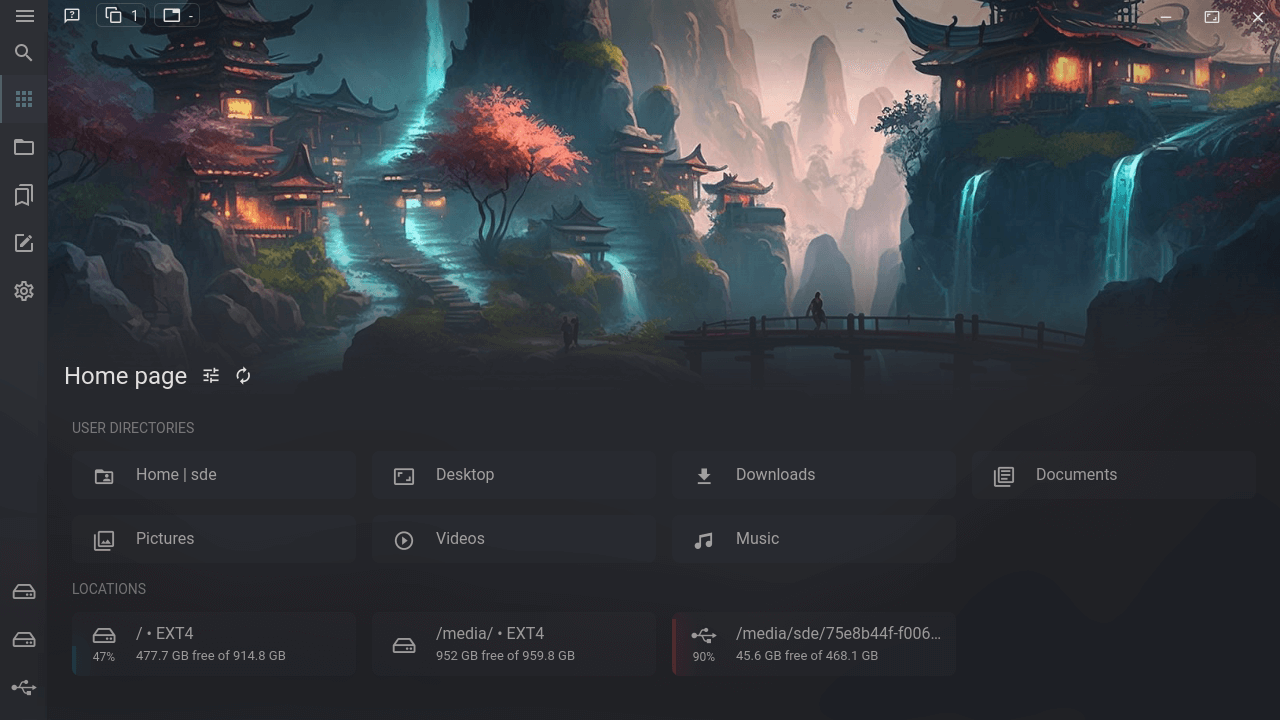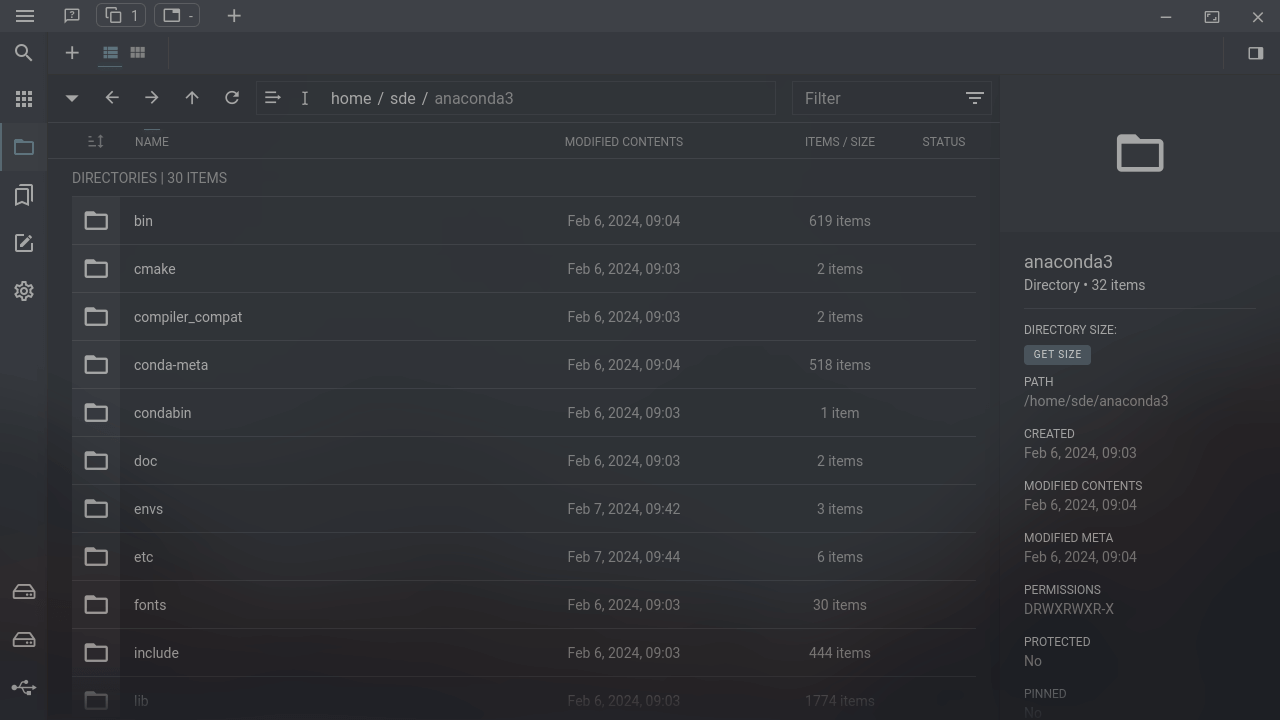In Operation
Here’s what we see when starting the file manager. It doesn’t start with a window like you’d expect from a file manager, but offers a home page showing user directories and locations.

There’s a navigator view which gives a rather more traditional view. The info panel can be toggled off if you find it distracting.

What features does this file manager offer?
There’s functionality you’d expect in any competent file manager such as global file searching, drag and drop, archiving/compression, and a customizable interface. The developer has also added support for workspace tabs, and a notes section.
There’s a built in file viewer too which lets you preview images, videos, and documents without needing to fire up an external program.

Summary
Sigma File Manager is a useful tool for file management. It offers an easy way to navigate through the file system with a particularly good search feature. We like its built-in file viewer too which is nicely implemented.
We’re not fans of the Electron framework. It often results in massively bloated apps that consume big globs of system resources. And Sigma is no exception. For example, the ps_mem utility reports that the program consumes around 740MB of RAM. That’s a hefty footprint for a file manager.
The alpha release (v2.0) of Sigma moves from Electron to the Tauri framework. This is definitely a sensible direction for the project to take. But this early preview release is too rough around the edges for us to review. For a file manager, we wouldn’t recommend using an alpha release. It does offer a dual-pane view which we find to be the most efficient way of managing our filesystems.
When v2 is more mature, we’ll definitely look at the software again.
Website: sigma-file-manager.vercel.app
Support: GitHub Code Repository
Developer: Aleksey Hoffman
License: GNU General Public License v3.0
Sigma File Manager is written in C. Learn C with our recommended free books and free tutorials.
Pages in this article:
Page 1 – Introduction and Installation
Page 2 – In Operation and Summary
